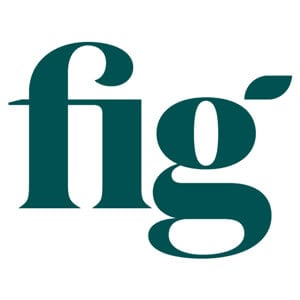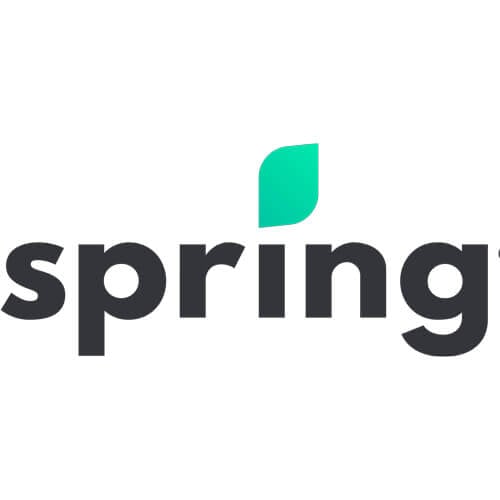Driving school in 2023 is different: Here’s everything you need to know

Created By
Kruzee
If it’s been a while since you took driving lessons, here’s what to expect today, whether you’re taking a refresher course or enrolling your teen.
Advertisement

Created By
Kruzee
If it’s been a while since you took driving lessons, here’s what to expect today, whether you’re taking a refresher course or enrolling your teen.

The only constant is change, and that definitely applies to driver’s education. If you went to driving school in the past and are looking to take refresher classes or enroll your children in lessons, you may be surprised by how much has changed. If you take driver’s ed this year, your experience will be quite different from that of previous grads.
In under 60 seconds, get matched with a personalized list of loan providers based on your needs and approval likelihood. No SIN required.
What happened? The introduction of driving school licensing systems in many Canadian provinces, coupled with different government ministries mandating stricter curriculum standards, has led to a sea change in the industry. At the same time, drivers today have to navigate new situations, such as drivers distracted by their smartphones and even self-driving cars on the road.
If you’re looking to head back to driving school in 2023 or enroll a family member in lessons, this guide will help you understand what’s changed—and what’s stayed the same.
Given that driving schools produce safer drivers, provincial governments have introduced incentives over the years to encourage Canadians to complete certified driver’s education courses.
In Ontario, for example, completing a Ministry of Transportation–approved beginner driver education (BDE) course can save students 10% to 30% on their auto insurance. Insurance for new drivers can cost up to $7,000 per year, so this discount can mean saving hundreds of dollars annually—covering the cost of attending driving school several times over. Alberta, New Brunswick, Newfoundland and Labrador, Nova Scotia and Prince Edward Island all offer similar savings on insurance for students who complete certified driver’s education courses.
Students who complete a Ministry of Transportation–approved BDE course in Ontario also qualify for accelerated road test booking. G1 license holders who complete a certified course can go for their G2 test eight months after getting their G1, rather than the standard one year.
In other provinces, the benefits of attending driving school look a bit different. In B.C., high school students can receive school credit for completing a driver’s education course certified by the Insurance Corporation of British Columbia (ICBC). They are also eligible to receive a six-month reduction on their graduated licensing time. In Quebec, the provincial government goes a step further. Since 2010, attending driving school has been mandatory for all new drivers in Quebec, in an effort to make roads safer.
One of the biggest changes in the driver’s education industry is the use of new technology in teaching.
Traditionally, students attending driving school were required to sit in physical classrooms for the theory portion of driver’s ed. Today, though, that part of the curriculum can legally be taught online in most Canadian provinces. In Ontario, for example, driving schools have been allowed to offer online course delivery since 2013, though very few driving schools did so before the COVID-19 pandemic. Today, online delivery of the in-class portion of driver’s ed is ubiquitous.
What hasn’t changed? Most driving schools remain super-traditional when it comes to scheduling in-car lessons. Whether you’re learning from a large national chain or a small fly-by-night operation, scheduling is still done manually—using phones, texts, and pen and paper. This can lead to last-minute cancellations, lesson delays and other hassles for students and instructors alike.
In addition, students usually know nothing about their instructors before they get in the car. Canadians are used to reading profiles and reviews for other types of services before they buy, but driving schools typically just provide an instructor’s phone number and call it a day. Given that you’ll be spending over 10 hours in the car with this person, you probably want to find someone who’s a good fit before you get in the vehicle.
One Canadian startup is trying to change these processes. Kruzee is a digital-first driving school that uses technology to streamline the driver’s ed experience. Students can read reviews of driving instructors and schedule in-car lessons with them online, rather than have one assigned randomly. For the theory portion of driver’s ed, Kruzee students can complete a self-paced course online, without having to go to a physical classroom. The school’s courses are certified by Ontario’s Ministry of Transportation, so students qualify for insurance savings and accelerated test booking. Kruzee students also save $400 on their first vehicle if they purchase it from Clutch, further helping to offset the cost of driving school. (Kruzee is currently available in Ontario, and it plans to expand to other provinces.)
Driving in 2023 looks quite different than it did in the past. Partially self-driving cars (like Teslas in autopilot mode), driver assistance systems (like Ford’s handless parking) and electric vehicles are now common on Canadian roads. At the same time, impaired driving is no longer limited to alcohol—now that cannabis is legal, that’s a concern for drivers, too. Canadians must also learn about the many ways that smartphones and smartwatches can distract drivers.
When selecting a driver’s education program, you’ll want to choose one that prepares you or your child for today’s driving challenges. Not all driving schools have updated their curriculum accordingly. When comparing schools, be sure to ask them whether the topics above are included in their lessons.

Apply for a personal loan with a 8.99% to 29.49% APR. Plus, 100% online application and no early repayment fees.

Apply for a personal loan with a 9.99% to 34.95% APR. Plus, fast e-transfers and no hit to your credit score when you apply.

Pre-qualify instantly to borrow up to $35,000, with rates from 8.99%
In the past, opening a driving school or becoming a driving instructor didn’t require too much in the way of licensing. A driving school could simply rent an office and put a rooftop sign on their vehicles and they’d be open for business. Today, though, there are rules to follow.
In order to operate in most Canadian provinces, driving schools and instructors must have a series of licenses. The licensing system for driving schools is designed to increase the quality of education students receive and make Canadian roads safer.
Typically, the licenses required fall into four categories:
Before enrolling yourself or a family member in a driving course, it’s a good idea to confirm that the school has all of the proper licenses in place. If you select a school or instructor without the requisite licenses, the government and insurance companies will not recognize your certificate of completion.
In addition to the introduction of driving school licensing systems, several transportation authorities, like Ontario’s Ministry of Transportation, have set out rigorous standards for what driving schools must teach new drivers. When driving schools apply to receive their driving school license, the ministry verifies that they meet the required teaching standards. Given that there are tens of thousands of driving schools across the country, increased government curriculum supervision helps to standardize teaching from coast to coast.
Unfortunately, not all changes in the driver’s education industry have been positive. Over the last 15 years, there has been an increase in driving school–related scams, so students need to be extra-vigilant.
The most common type of scam is a driving instructor or driving school operating without the proper licenses or insurance. Taking lessons from an unlicensed school can result in a worthless certificate. To avoid this, check whether the driving school you’re enrolling in is certified by provincial and municipal authorities.
In Ontario, for example, the Ministry of Transportation publishes a list of approved driving schools. It also publishes a list of driving schools that have had their license revoked. Alberta, British Columbia and Quebec have similar lists.
Another common scam is fake and unlicensed driving instructors posting on sites such as Kijiji or Facebook Marketplace. They aren’t certified, but they will definitely take your money. We recommend taking classes from government-approved driving schools, even though it may cost a bit more. If something sounds too good—or too cheap—to be true, it likely is. Driving school typically costs $600 to $1,000 in Canada. If a driving school charges less than that, you should avoid it.
In terms of more serious offenses, there have been increased reports of driving instructors taking students’ money and ghosting them, and driving schools teaching students dangerous manoeuvres. That’s why it’s important to get referrals, read reviews and seek out third-party assessments of a school’s competency. That said, while many driving schools claim to have thousands of reviews, not all reviews are authentic or fairly obtained. Some driving schools will offer students bonus marks on exams if they provide a positive review. If you notice a large discrepancy between a school’s reviews on Yelp! and Google, for example, it may be a sign that you should be skeptical.
While driving school has changed considerably over the last couple of decades, the attributes of a good driver haven’t. Practicing safe defensive driving is a skill that lasts a lifetime, and investing in driving lessons is critical to helping you hone that ability.
If you’re a parent who’s looking to enroll your kid(s) in driving school, consider this: Getting behind the wheel is one of the most dangerous tasks we undertake on a day-to-day basis. The best way to ensure that your teenager is safe while learning to drive—and driving on their own thereafter—is to give them the right education. A qualified driving instructor can instill safe driving habits and teach teens the techniques that could one day save their life.
Affiliate (monetized) links can sometimes result in a payment to MoneySense (owned by Ratehub Inc.), which helps our website stay free to our users. If a link has an asterisk (*) or is labelled as “Featured,” it is an affiliate link. If a link is labelled as “Sponsored,” it is a paid placement, which may or may not have an affiliate link. Our editorial content will never be influenced by these links. We are committed to looking at all available products in the market. Where a product ranks in our article, and whether or not it’s included in the first place, is never driven by compensation. For more details, read our MoneySense Monetization policy.
This is not advertising nor an advertorial. This is an unpaid article that contains useful and relevant information. It was written by a content partner based on its expertise and edited by MoneySense.
Share this article Share on Facebook Share on Twitter Share on Linkedin Share on Reddit Share on Email
Hi, about how much in total does an international student require to acquire the G-2 (truck drivers) full training, and for how long?
It seems that SK has been left out of this article… for those wondering…
Driver Education has been mandatory for all new drivers since 2006.
Driver Education is provided free of charge to all eligible High School students in SK
Driver Educators in SK are required to complete training courses as well as continued education with mandatory professional development yearly.